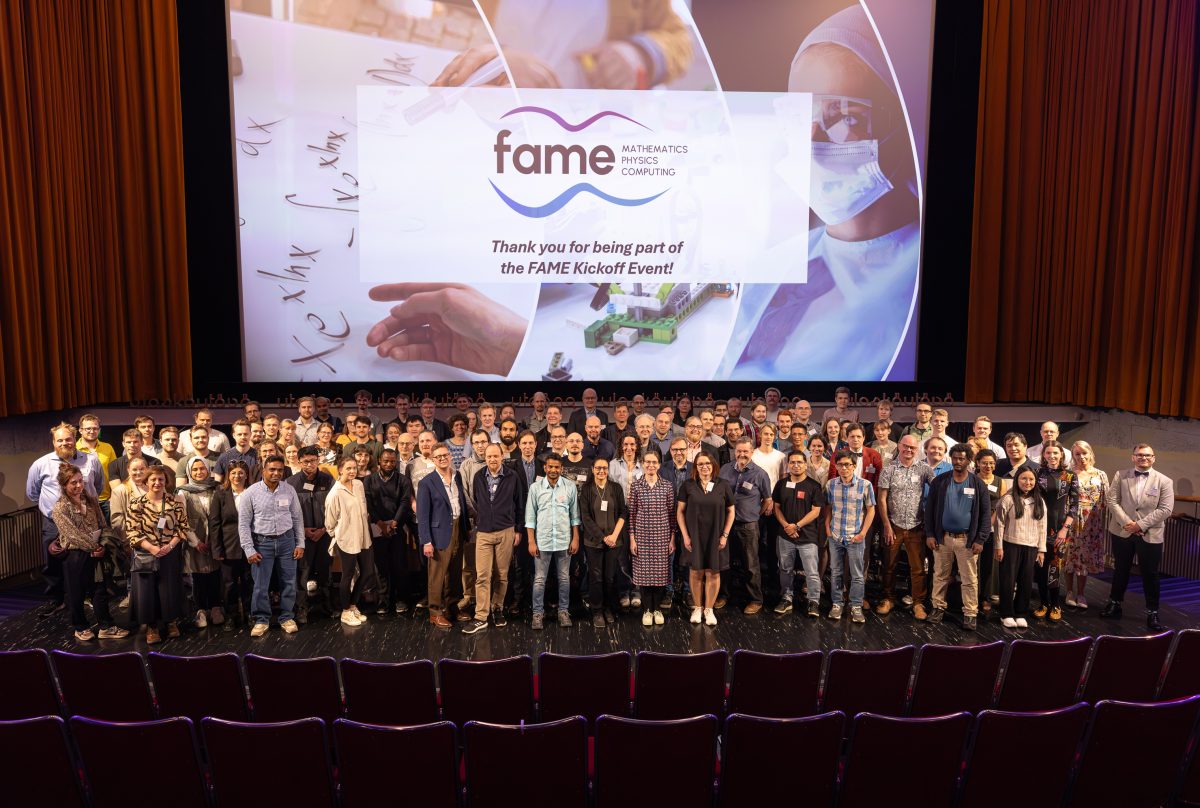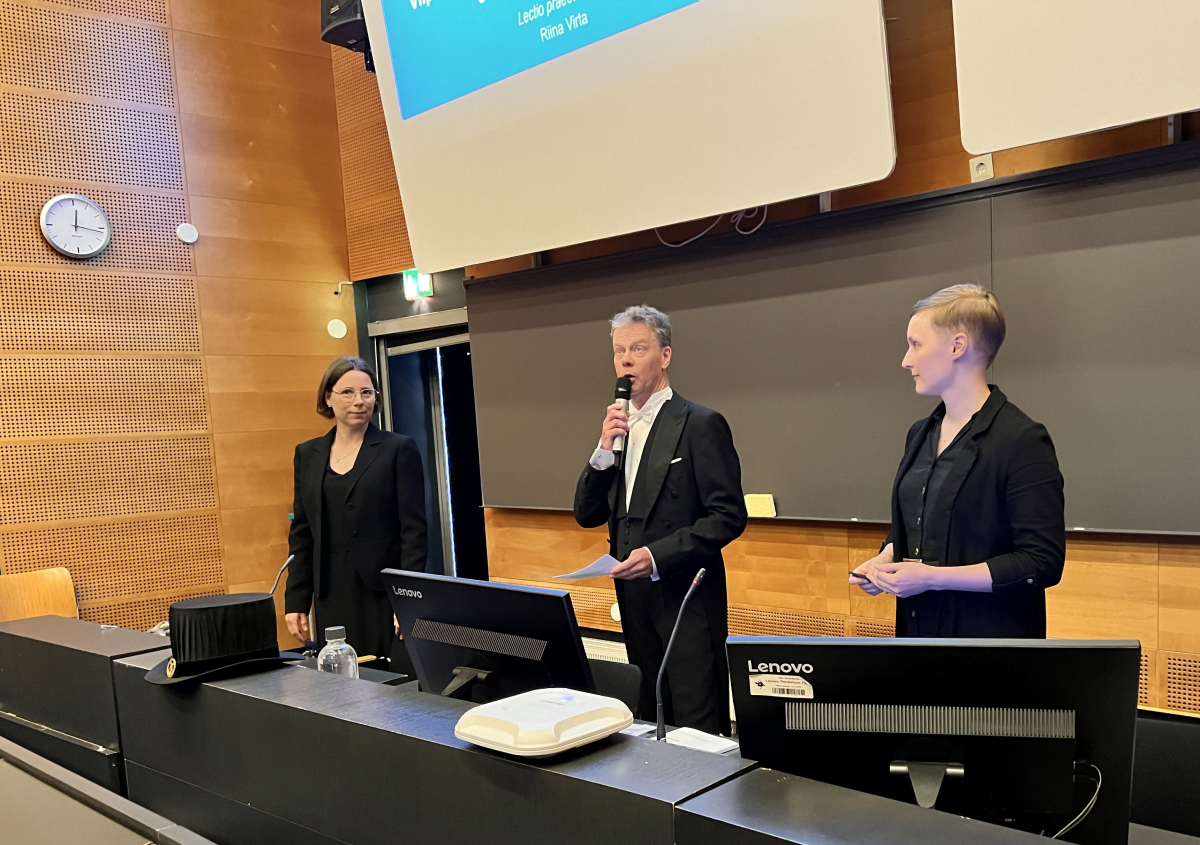A Finnish dissertation explored imaging-related inverse problems with machine learning and traditional algorithms. Even old theories can help to break a new ground. Just a small spark can take you far.
From being a freshman who had never written a line of code to completing a PhD thesis in computational inverse problems.
This is how Doctoral Researcher Siiri Rautio sums up her over a decade-long academic journey in the University of Helsinki. While initially planning to pursue studies in bioinformation technology, Rautio instead found a new spark during of what was supposed to be just a quick detour in mathematics and computer sciences before moving on.
“At that time, I did not see myself of becoming a mathematician or pursuing a career in the field”, Rautio reminisces. “But during my very first course in applied mathematics I realised that, OK, there was plenty of opportunities for real-world applications as well as room for coding in mathematics. I was so inspired by this realisation that at the end of the course I went straight to my course lecturer and asked for a topic for my Bachelor’s thesis. It was during that thesis work that I also had my first thoughts about aiming for a doctoral degree.”
On Thursday, 3 April 2025, Rautio closed one chapter in her academic life as she defended her doctoral dissertation Ill-posed Microlocal Imaging Using Targeted Deep Learningat the University of Helsinki’s Faculty of Science. Fittingly, the very same course lecturer who gave Rautio the spark that started it all, Professor Samuli Siltanen, FAME’s Deputy Vice Director, served as the custos.
What’s in the box?
As artificial intelligence (AI) has become increasingly more important to all computational sciences in the past several decades, so too has the method of using neural networks.
In machine learning, neural networks are computer systems inspired by how the human brain works. Made up of layers of interconnected units called neurons that work together to recognize patterns, a neural network builds knowledge from training datasets, gradually learning from mistakes and adapting accordingly to successfully complete the task it is being trained for. The more complicated the task is, the more data and learnable parameters the neural network needs to learn to solve it.
Rautio’s main research interests lie in combining deep learning – a subset of machine learning that uses multilayered neural networks to automatically learn complex patterns – with analytical mathematical methods, as well as in development of algorithms for inverse problems that take advantage of both approaches. However, deep learning is often characterised as “black box” due to its nature of producing results while revealing nothing about its internal decision-making process. This unknown element significantly hampers the deep learning models’ credibility for end-users.
“If we think about, say, medical imaging, it is extremely important that one can clearly understand how a neural network decided to solve its task. How did it reach to this conclusion? Why did that mistake happen?”, Rautio describes the problem. “However, if we can limit the neural network’s role in solving the problem at hand and instead use traditional algorithms with proven mathematics behind them as long as possible, it is significantly easier for us to analyse the achieved outcome.”
And this is exactly what Rautio aimed to achieve in her dissertation work.
In the so-called targeted deep learning the neural network’s task is decomposed into learned and non-learned parts specifically tailored for the problem in hand. By only targeting a specific part of the problem with deep learning, the networks can be smaller and less data-heavy to train, and the end-result easier to interpret. And if part of the problem can be solved with robust mathematics, it will provide the learned part already more robust features.
Theories from the past, potential for the future
In her doctoral research, Rautio explored solving three imaging-related inverse problems by combining targeted deep learning and non-learned algorithms: X-ray computed tomography (CT), electrical impedance tomography, and image deconvolution. CT is widely used in medical diagnostics, and with better algorithms and the help of artificial intelligence it is possible to reduce both the amount of measurement data needed and the patient’s radiation exposure without compromising image quality too much. Electrical impedance tomography uses small electrical currents instead of X-rays, so enhancing the technique opens possibilities for, for example, lung imaging of infants and continuous monitoring of stroke patients. Deconvolution attempts to resharpen blurred image signals which would be helpful not only in standard but also, for example, in astrophotography.
With these three problems in focus, Rautio’s thesis demonstrated methods of combining deep learning and inverse mathematics by using experimental data and natural images. In the case of electrical impedance tomography, a field that was relatively unfamiliar to Rautio beforehand, the suggested method provided especially impressive results.
“Samuli and his colleagues spent almost 20 years formulating the theoretical basis, but did not necessary expect it to ever move from theory to practice. Sometimes in mathematics we find results that are purely theoretical”, Rautio says. “However, as we examined this problem more closely with deep learning in mind, we realised that by using even a smaller and specialised neural network, we could actually bring the theory finally into practice – and what’s more, with real data.”
While still substantially ground left to break before making its way into actual medical imaging, the results in Rautio and her co-workers’ paper will now serve as a proof-of-concept with huge potential for further research.
“My hope is that this work will serve as an interesting base for other researchers’ work both here in the University of Helsinki’s inverse problems research group and elsewhere. I believe that we should continue to apply theoretical inversion mathematics in practice, and not just let black box AI-solutions to completely take over the field.”
Photo: Siiri Rautio | From the right: Doctoral Candidate Siiri Rautio, Professor Samuli Siltanen as Custos, and Professor Elena Loli Piccolomini from University of Bologna as Opponent.




